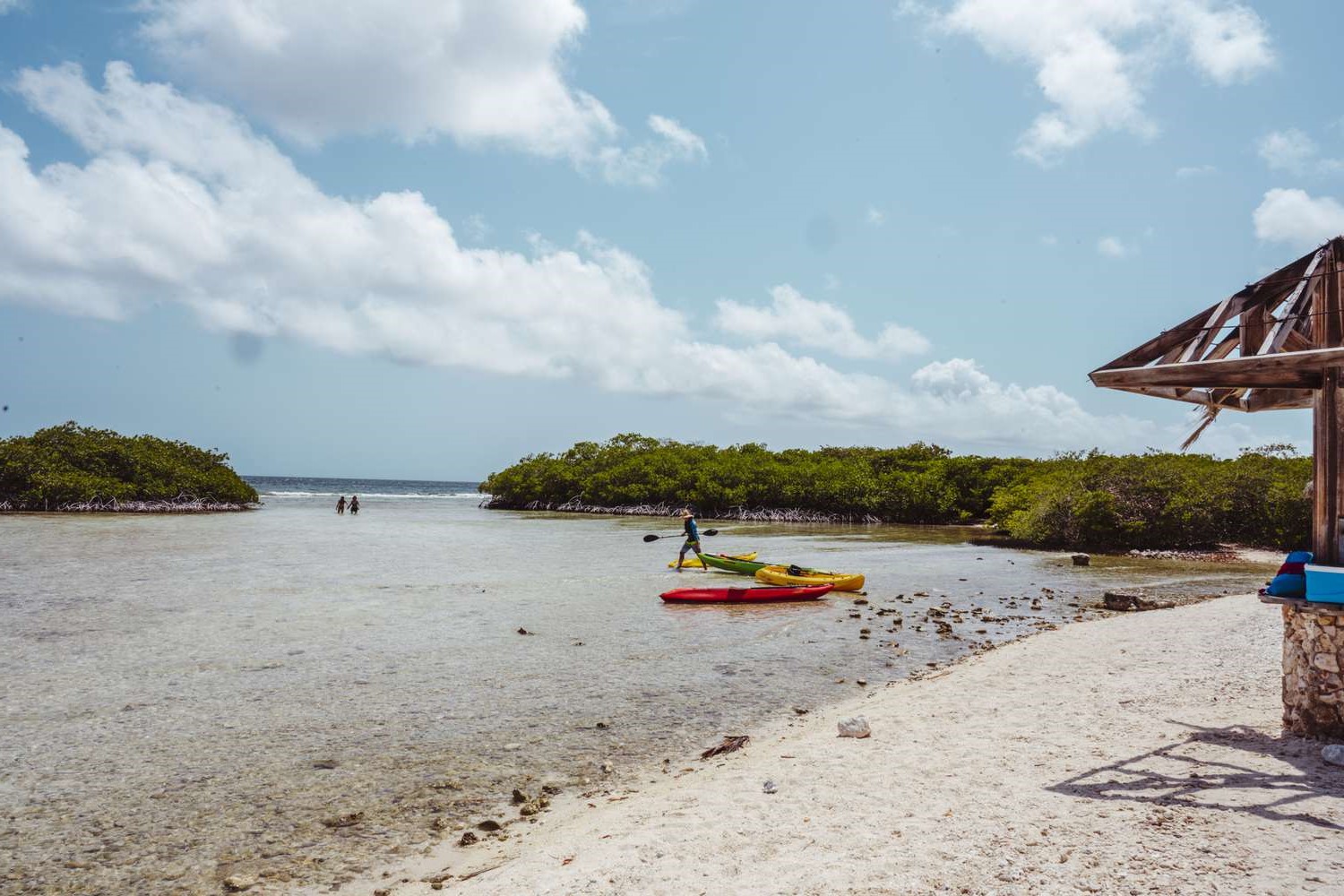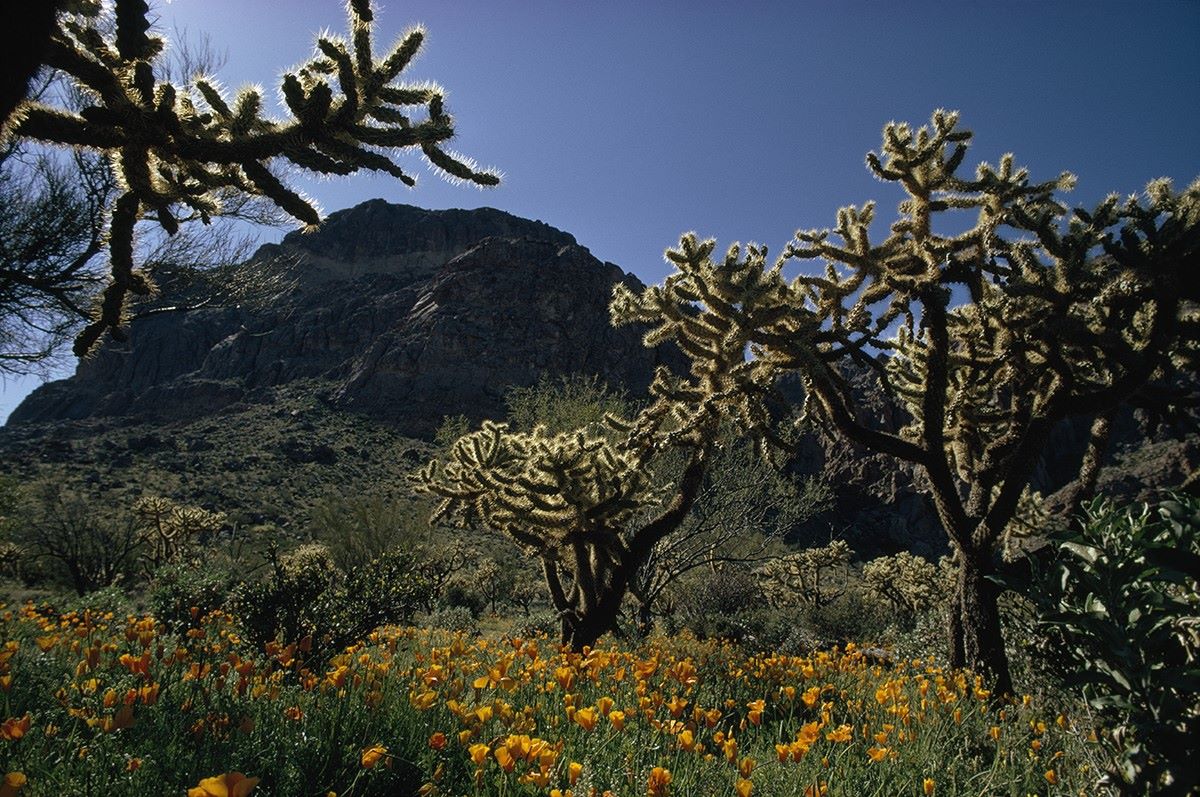Home>Weather and Climate>Aruba Monthly Rainfall: A Comprehensive Guide To Rainfall Patterns In Aruba


Weather and Climate
Aruba Monthly Rainfall: A Comprehensive Guide To Rainfall Patterns In Aruba
Published: March 6, 2024
Discover the weather and climate of Aruba with our comprehensive guide to monthly rainfall patterns. Plan your trip with confidence using our detailed insights.
(Many of the links in this article redirect to a specific reviewed product. Your purchase of these products through affiliate links helps to generate commission for Temperatures.com, at no extra cost. Learn more)
Table of Contents
Introduction
Aruba, a picturesque island nestled in the southern Caribbean, is renowned for its stunning beaches, vibrant culture, and year-round sunshine. However, despite its reputation as a sun-drenched paradise, Aruba experiences distinct rainfall patterns that play a crucial role in shaping its unique ecosystem. In this comprehensive guide, we will delve into the intricate nuances of Aruba's monthly rainfall, exploring the factors influencing precipitation, historical data, seasonal variations, and the profound impact of rainfall on the island's flora and fauna.
As we embark on this journey through Aruba's rainfall landscape, we will unravel the intricate interplay of climatic elements that contribute to the island's diverse weather patterns. From the arid windswept plains to the lush pockets of greenery, Aruba's rainfall serves as a lifeline for its natural environment, sustaining a delicate balance that has evolved over centuries.
Join us as we uncover the captivating story of Aruba's rainfall, gaining insights into the past, present, and future of this vital climatic phenomenon. Through this exploration, we aim to provide a deeper understanding of the intricate relationship between rainfall and the rich tapestry of life on this enchanting Caribbean gem.
Understanding Aruba's Climate
Aruba, a captivating island situated in the southern Caribbean, boasts a unique and diverse climate that significantly influences its natural landscapes and ecosystems. The island's climate is characterized by its arid and semi-arid conditions, shaped by the trade winds that sweep across the region. These trade winds, originating from the northeast, play a pivotal role in defining Aruba's climate, contributing to its relatively low annual rainfall and consistently warm temperatures.
The geographical location of Aruba, positioned outside the hurricane belt, shields the island from the devastating impact of tropical storms and hurricanes, further shaping its distinct climate. The absence of these extreme weather events allows for a relatively stable and predictable climate, attracting visitors seeking a tranquil and sun-soaked retreat throughout the year.
Aruba's climate can be classified as a tropical marine climate, characterized by its warm temperatures and refreshing sea breezes. The average annual temperature hovers around 82°F (28°C), with minimal temperature fluctuations throughout the year. This consistent warmth, coupled with gentle trade winds, creates an idyllic environment for beachgoers and outdoor enthusiasts, making Aruba a coveted destination for sun-filled vacations.
The island's arid climate is also reflected in its vegetation, with resilient cacti and drought-resistant flora adorning the rugged terrain. The scarcity of rainfall has shaped a unique ecosystem, where plants and animals have adapted to thrive in the arid conditions. Despite the limited precipitation, Aruba's natural beauty is evident in its diverse landscapes, from the iconic Divi Divi trees bending gracefully in the trade winds to the hidden oases that flourish in unexpected corners of the island.
Understanding Aruba's climate is essential for appreciating the delicate balance that sustains its natural wonders. The interplay of trade winds, warm temperatures, and minimal rainfall creates a captivating backdrop for exploring the island's ecological diversity. As we delve deeper into the factors influencing rainfall in Aruba, we gain a deeper appreciation for the intricate web of climatic elements that define this enchanting Caribbean paradise.
Factors Affecting Rainfall in Aruba
The rainfall patterns in Aruba are influenced by a myriad of factors that intricately shape the island's climatic conditions. One of the primary determinants of rainfall in Aruba is the presence of trade winds, which play a pivotal role in modulating the island's precipitation levels. These trade winds, originating from the northeast, carry relatively low moisture content as they traverse the Caribbean region, resulting in limited rainfall over Aruba. The consistent flow of these trade winds acts as a barrier to the influx of moisture-laden air, contributing to the arid and semi-arid climate that characterizes the island.
Furthermore, the geographical location of Aruba outside the hurricane belt shields the island from the influence of tropical storms and hurricanes, which are significant sources of rainfall in other Caribbean regions. The absence of these extreme weather events, while contributing to the island's overall climate stability, also limits the potential for substantial rainfall from tropical disturbances.
The topographical features of Aruba, including its relatively flat terrain and limited elevation, also impact rainfall patterns. The absence of significant mountain ranges or high-altitude areas reduces the orographic effect, wherein moist air is forced to rise and subsequently release precipitation as it encounters elevated landforms. As a result, Aruba experiences minimal enhancement of rainfall through orographic lifting, further contributing to its arid climate.
In addition to natural factors, human activities and urbanization have also exerted an influence on rainfall patterns in Aruba. The expansion of urban areas and infrastructure development can lead to alterations in local microclimates, potentially affecting precipitation through mechanisms such as urban heat island effects and changes in surface albedo. While the direct impact of human activities on rainfall in Aruba may be relatively modest compared to natural factors, the cumulative effect of anthropogenic influences on the island's climate warrants consideration in the broader context of environmental sustainability.
The intricate interplay of these factors underscores the complexity of rainfall patterns in Aruba, shaping the island's climate and ecological dynamics. By comprehensively understanding the multifaceted influences on rainfall, we gain valuable insights into the delicate balance that sustains Aruba's natural environment, offering a deeper appreciation for the intricate web of climatic elements that define this captivating Caribbean paradise.
Historical Rainfall Data
Historical rainfall data serves as a valuable lens through which we can gain profound insights into the precipitation patterns that have shaped Aruba's climatic narrative over the years. By examining the historical records of rainfall, we can discern recurring trends, anomalies, and long-term variations that offer a compelling perspective on the island's hydrological dynamics.
The meticulous documentation of rainfall data provides a comprehensive chronicle of Aruba's precipitation history, capturing the ebb and flow of rainfall across different months and years. This wealth of historical data enables meteorologists, climatologists, and researchers to discern patterns and fluctuations, facilitating a deeper understanding of the island's rainfall regime.
The historical rainfall records reveal a consistent theme of limited precipitation, underscoring the arid and semi-arid nature of Aruba's climate. The data depicts a relatively low annual rainfall total, with distinct variations observed across different months. While certain months may experience marginally higher precipitation levels, the overall trend reflects the island's characteristic aridity.
Moreover, the historical rainfall data provides a basis for comparative analysis, allowing for the identification of potential shifts or anomalies in precipitation patterns. By juxtaposing historical records with contemporary data, researchers can discern any noteworthy deviations or long-term trends, shedding light on the evolving nature of rainfall in Aruba.
The insights gleaned from historical rainfall data are invaluable for a holistic understanding of the island's hydrological dynamics. By unraveling the intricate tapestry of historical precipitation patterns, we gain a nuanced perspective on the interplay of climatic factors that have shaped Aruba's rainfall landscape over time.
As we delve into the historical rainfall data, we embark on a captivating journey through the annals of Aruba's climatic history, unraveling the compelling story of precipitation patterns that have left an indelible mark on the island's natural environment. This exploration of historical rainfall data serves as a testament to the enduring significance of precipitation in shaping the fabric of Aruba's climate, offering a profound glimpse into the intricate interplay of climatic elements that define this captivating Caribbean paradise.
Seasonal Variations in Rainfall
The seasonal variations in rainfall play a pivotal role in shaping the dynamic tapestry of Aruba's climate, offering a nuanced perspective on the ebb and flow of precipitation throughout the year. As we delve into the intricate nuances of seasonal rainfall patterns, we uncover the captivating interplay of climatic elements that define the island's hydrological dynamics.
Aruba experiences distinct seasonal variations in rainfall, with the months of October to January typically marking the peak of the rainy season. During this period, the island witnesses a modest increase in precipitation, providing a welcome respite from the arid conditions that prevail for much of the year. The rainfall during these months contributes to the rejuvenation of the island's flora and the replenishment of water sources, fostering a renewed vitality across the natural landscape.
In contrast, the months from February to September are characterized by minimal rainfall, aligning with the island's overarching arid climate. The scarcity of precipitation during these months underscores the resilience of Aruba's ecosystem, where flora and fauna have adapted to thrive in the face of limited moisture. The arid conditions that prevail for a significant portion of the year contribute to the unique ecological adaptations that define the island's natural environment.
The seasonal variations in rainfall not only influence the island's flora and fauna but also play a crucial role in shaping the experiences of visitors and residents. The transition from the rainy season to the drier months heralds a shift in the island's ambiance, as the landscape responds to the fluctuations in precipitation. The vibrant hues of the flora, the levels of water bodies, and the overall aesthetic of the island undergo subtle transformations in response to the seasonal variations in rainfall.
By comprehensively understanding the seasonal variations in rainfall, we gain a deeper appreciation for the intricate rhythms of Aruba's climate. The interplay of rainy and dry seasons weaves a compelling narrative of resilience and adaptation, underscoring the enduring influence of precipitation on the island's ecological dynamics. As we navigate through the seasonal nuances of rainfall in Aruba, we unravel a captivating story of climatic variability that shapes the island's natural splendor throughout the year.
Impact of Rainfall on Aruba's Ecosystem
The impact of rainfall on Aruba's ecosystem is profound and far-reaching, exerting a pivotal influence on the island's diverse flora, fauna, and ecological dynamics. Despite the arid and semi-arid climate that characterizes the island, the limited precipitation plays a crucial role in sustaining the delicate balance of its natural environment.
The sporadic bursts of rainfall, particularly during the peak of the rainy season, serve as a catalyst for the rejuvenation of Aruba's flora. The parched landscapes, adorned with resilient cacti and drought-resistant vegetation, undergo a remarkable transformation in response to the influx of moisture. Seeds dormant in the arid soil spring to life, unfurling vibrant blooms and verdant foliage that punctuate the rugged terrain. The ephemeral beauty of these natural displays, ignited by the fleeting touch of rainfall, underscores the resilience and adaptability of Aruba's plant life.
Moreover, the impact of rainfall extends to the sustenance of vital water sources that support the island's ecosystem. The replenishment of aquifers, ephemeral pools, and vital water catchments during the rainy season provides a lifeline for diverse species, from endemic reptiles to migratory birds. These transient oases, nourished by the ephemeral bounty of rainfall, serve as critical refuges for wildlife, fostering biodiversity in the midst of the arid expanse.
The influence of rainfall on Aruba's ecosystem is also evident in the intricate adaptations of its fauna. From the elusive burrowing owl to the resilient whiptail lizards, the island's wildlife has evolved to thrive in the face of limited precipitation. The sporadic rainfall events trigger a cascade of ecological responses, from the emergence of ephemeral blooms that sustain pollinators to the resurgence of insect activity that ripples through the food web. These ephemeral pulses of life, ignited by the transient touch of rainfall, underscore the intricate interplay of climatic elements that shape the island's ecological tapestry.
As we unravel the impact of rainfall on Aruba's ecosystem, we gain a profound appreciation for the resilience and adaptability of the island's natural world. The transient touch of rainfall, though fleeting, leaves an indelible imprint on the intricate web of life that thrives amidst the arid landscapes. Through its influence on flora, fauna, and vital water sources, rainfall emerges as a defining force that sustains the rich biodiversity and ecological vitality of this captivating Caribbean gem.
Future Outlook for Aruba's Rainfall Patterns
The future outlook for Aruba's rainfall patterns presents a compelling narrative shaped by the intricate interplay of climatic dynamics and global environmental trends. As we peer into the horizon of Aruba's hydrological future, several key factors come into focus, offering insights into the potential trajectories of rainfall patterns on the island.
Climate models and projections provide a lens through which we can discern the potential shifts in Aruba's rainfall patterns. These models, informed by comprehensive data and scientific analyses, offer valuable perspectives on the anticipated changes in precipitation levels, seasonal variations, and long-term trends. While the overarching arid and semi-arid climate of Aruba is expected to endure, subtle nuances in rainfall patterns may emerge, reflecting the broader context of global climate dynamics.
The influence of climate change on Aruba's rainfall patterns looms prominently on the horizon, underscoring the need for proactive measures to mitigate potential impacts. The evolving climate landscape, characterized by rising global temperatures and shifting weather patterns, may introduce complexities into the island's hydrological dynamics. The potential for altered precipitation regimes, intensified drought conditions, or sporadic extreme rainfall events necessitates a vigilant approach to understanding and adapting to the evolving rainfall patterns.
Furthermore, the integration of advanced technologies and innovative water management strategies holds promise for addressing the challenges posed by evolving rainfall patterns. From harnessing sustainable water harvesting techniques to implementing efficient irrigation practices, Aruba is poised to embrace forward-thinking solutions that optimize the utilization of limited precipitation. The synergy of technological advancements and ecological stewardship paves the way for a resilient approach to managing and sustaining the island's water resources amidst evolving rainfall dynamics.
As Aruba navigates the complexities of future rainfall patterns, collaboration and knowledge exchange among diverse stakeholders emerge as pivotal components of proactive adaptation. Engaging in interdisciplinary dialogues, sharing best practices, and fostering community resilience are essential elements in charting a sustainable course amidst potential shifts in rainfall patterns. By cultivating a collective ethos of environmental stewardship and adaptive resource management, Aruba can fortify its resilience in the face of evolving rainfall dynamics.
The future outlook for Aruba's rainfall patterns embodies a narrative of adaptation, innovation, and environmental stewardship. By embracing the complexities of evolving climate dynamics and leveraging proactive strategies, Aruba is poised to navigate the nuances of future rainfall patterns with resilience and foresight, ensuring the sustainable coexistence of its natural ecosystems and vibrant communities.
Conclusion
In conclusion, the intricate tapestry of Aruba's rainfall patterns unveils a captivating narrative of resilience, adaptation, and ecological vitality. The island's arid and semi-arid climate, shaped by trade winds and the absence of tropical storms, underscores the enduring influence of limited precipitation on its natural landscapes. The seasonal variations in rainfall, from the modest increase during the rainy season to the prolonged aridity of the drier months, weave a compelling story of ecological dynamics and adaptation.
The impact of rainfall on Aruba's ecosystem resonates deeply, nurturing the resilience of its flora, sustaining vital water sources, and fostering biodiversity amidst the arid expanse. The transient touch of rainfall ignites ephemeral bursts of life, from vibrant blooms to the resurgence of wildlife activity, underscoring the profound influence of precipitation on the island's natural world.
As we peer into the horizon of Aruba's rainfall patterns, the convergence of climate models, technological advancements, and proactive adaptation strategies offers a beacon of hope amidst potential shifts in precipitation dynamics. The island's future outlook embodies a narrative of innovation, resilience, and environmental stewardship, paving the way for sustainable coexistence with evolving climatic nuances.
Through this comprehensive exploration of Aruba's rainfall landscape, we have gained a deeper understanding of the intricate interplay of climatic elements that define the island's ecological tapestry. The transient touch of rainfall, though fleeting, leaves an indelible imprint on the delicate balance of life that thrives amidst the arid terrains and vibrant oases of this captivating Caribbean gem.
As we conclude this journey through Aruba's rainfall patterns, we are reminded of the enduring significance of precipitation in shaping the island's natural environment. The captivating story of rainfall, woven into the fabric of Aruba's climate, serves as a testament to the resilience, adaptability, and timeless allure of this enchanting Caribbean paradise.














